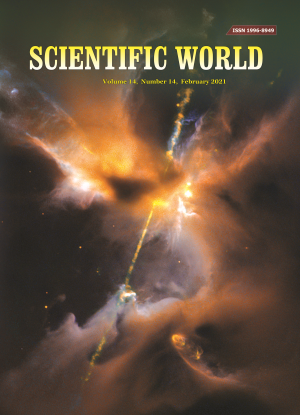Phytochemical Analysis, Antioxidant, Antimicrobial Activities and GC-MS Profiling Of Drymaria Diandra Blume
DOI:
https://doi.org/10.3126/sw.v14i14.35000Keywords:
Antioxidant, Antimicrobial, GC-MS, PhytochemicalAbstract
Drymaria diandra is used in Nepalese traditional medicine to treat various ailments. The hexane, dichloromethane, ethyl acetate, methanol and 50% aqueous methanol extracts of D. diandra were prepared and screened for the presence of different classes of phytochemicals. Methanol and 50% aqueous methanol extracts showed the presence of phenolics, flavonoids and carbohydrates so their total contents were estimated. The highest amount of phenolics and flavonoids were found in methanol extract (190.58±2.21 mg GAE/g extract and 69.25±7.91 mg CE/g extract respectively). The highest amount of sugar was found in 50% methanol extract (185.60±2.53 mg GE/g extract). Similarly, the extracts were tested for the antibacterial activity against one gram negative bacteria, Escherichia coli and one gram positive bacteria Staphylococcus aureus. All the tested extracts showed good antibacterial activity against both bacteria with the inhibition zone ranging from 10 -22 mm. The free radical scavenging activity was determined using DPPH free radical. Both methanol and 50% aqueous methanol extracts showed strong antioxidant activity (IC50 13.61 and 16.94 μg/ml respectively). The GC-MS analysis of hexane extract revealed the presence of more than 22 compounds. However, 9 compounds were identified by comparing the mass fragmentation pattern of each compound with the standard NIST mass spectral database




